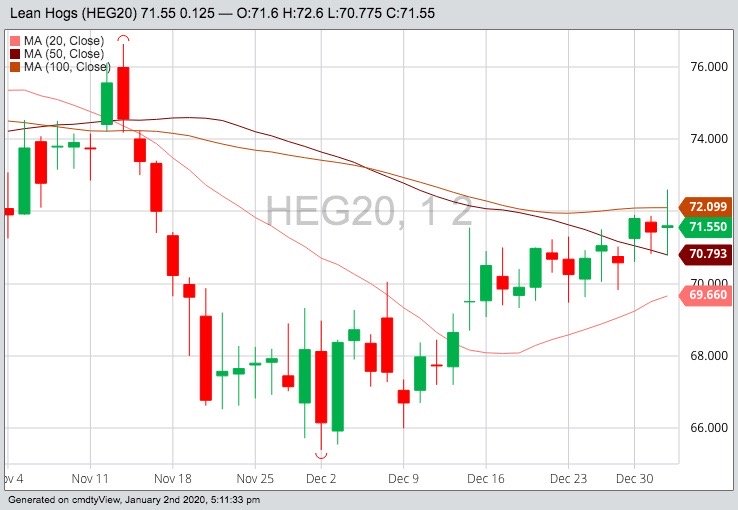Chicago | Reuters — U.S. hog futures kicked off 2020 by approaching seven-week highs in gains driven by increasing expectations for bigger sales of American pork to China.
China, the world’s largest pork consumer, needs larger imports to offset a domestic meat shortage caused by an outbreak of the fatal pig disease African swine fever. U.S. farmers hope China will increasingly turn to the United States for pork after Washington and Beijing sign an initial deal to ease their bruising trade war.
U.S. President Donald Trump said on Tuesday that a Phase One trade deal with Beijing would be signed on Jan 15. It includes a commitment by China to buy more American agricultural products, although details have not been announced.
Read Also

U.S. grains: Corn sets contract lows on expectations for big US crop
Chicago Board of Trade corn futures set contract lows and soybean futures sagged on Friday on expectations that beneficial weather for U.S. crops will lead to bumper harvests, analysts said.
“There’s still a rising feeling of confidence about a signing and there’s still hope that this will result in some stronger export numbers in the year ahead,” said Rich Nelson, chief strategist for U.S. broker Allendale.
Most actively traded February lean hog futures rose 0.125 cent, to 71.55 cents/lb., at the Chicago Mercantile Exchange. The contract touched its highest price since Nov. 15.
African swine fever has reshaped global meat markets by pushing China to search the world for meat to replace millions of dead pigs.
The U.S. has been at a disadvantage to other suppliers since last year because Beijing imposed retaliatory tariffs on imports of American pork as part of the two countries’ trade war.
U.S. farmers hope China eliminates its retaliatory tariffs or issues more waivers to tariffs. They have hefty inventories after expanding herds to record-large numbers last year.
“You haven’t seen the wave of pork demand that it would take on the trade front to get the market really excited,” a commodities broker said. “With the expanded hog herd, we need to move it.”
In the cash market for pork, prices increased for carcasses, loins, butts and ribs, according to U.S. Department of Agriculture data.
Traders on Friday will review weekly USDA export sales data for pork and beef.
Most actively traded February live cattle futures slumped 0.15 cent, to 125.775 cents/lb., at the CME and set its lowest price since Dec. 11. March feeder cattle futures dipped 0.5 cent, to 143.725 cents/lb. The contract touched its lowest price since Dec. 9.
Profit-taking weighed on cattle futures, along with improved weather in parts of the U.S. Plains, traders said.
— Tom Polansek reports on agriculture and ag commodities for Reuters from Chicago.
















